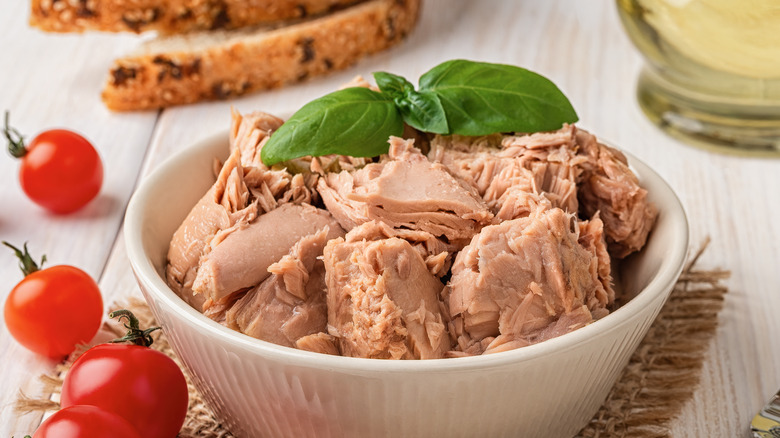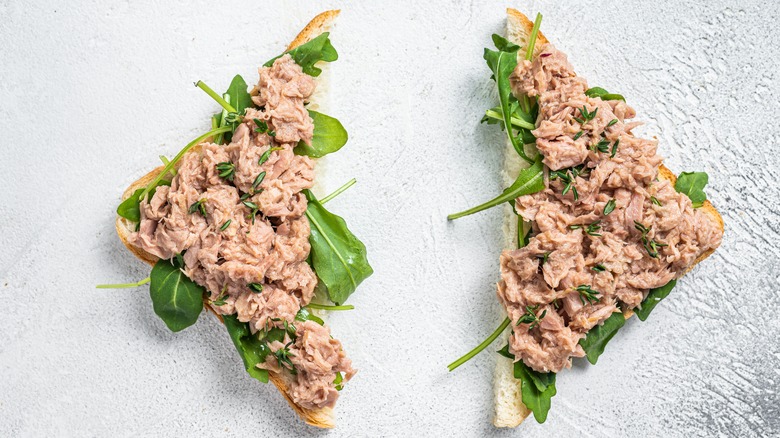Martha Stewart's Tuna Salad Features One Unexpected Ingredient
Most people don't need Martha Stewart to teach them how to make a tuna salad. It takes two ingredients at minimum to make — a can of tuna and some mayo — and all you need to do is mix them up. If you want to spruce it up a little, you can always add some celery and onion or extra seasoning, and even if you do so, you still don't have to measure every ingredient. But while this classic version of the recipe can definitely be tasty, Stewart's twist on it makes for an extra satisfying sandwich.
As the celebrity chef shared in a 2006 episode of "The Martha Stewart Show," the only traditional ingredients she uses in her tuna salad are canned tuna and celery. Even the mayonnaise is swapped with "lemonaise" (aka lemony mayonnaise) and is further supplemented with more lemon juice. Stewart also adds a diced apple, much like you would with a chicken salad. As for the seasoning, her tuna salad calls for the typical salt and pepper, but is also enhanced with an unexpected ingredient: fresh basil.
Adding basil to tuna salad
When you add basil to a dish, whether it be a tuna salad or anything else, you introduce a distinct herbaceous quality to it. When it comes to tuna salad specifically, it also adds brightness, cutting through the rich, savory flavors of the mayonnaise and tuna. Technically you can achieve this effect with any other fresh herb, but there's a reason basil works particularly well in Martha Stewart's version of tuna salad.
For starters, basil and fish are naturally complementary. Basil and lemon is another common pairing, and Stewart's tuna salad uses both lemonaise and lemon juice. By strategically incorporating an herb that complements the main components of her tuna salad, all the flavors are tied together, even the black pepper, which also goes well with basil. The result is a more satisfying tuna salad, so it's no wonder Martha Stewart considers it her favorite.
How much basil to add to tuna salad
For a 12-ounce can of tuna, Martha Stewart uses two tablespoons of chopped basil, however like any other tuna salad, you don't necessarily have to use exact measurements. Just keep in mind that basil has a distinct flavor, and the more you use, the more may overpower your tuna salad. If you want it to have a supporting role, try to stick to around the same ratio Stewart uses.
Stewart prefers to use fresh basil in her tuna salad, but you can easily substitute dry basil instead. One teaspoon of dry basil is equivalent to 3 teaspoons of fresh basil. You can also opt for pesto if that's all you have, but this would also impart a garlic flavor to your tuna salad. If you do decide to use fresh basil, just make sure to cut it with a sharp knife to prevent bruising. Basil loses its flavor when bruised, and you want your tuna to have as much flavor as possible.


